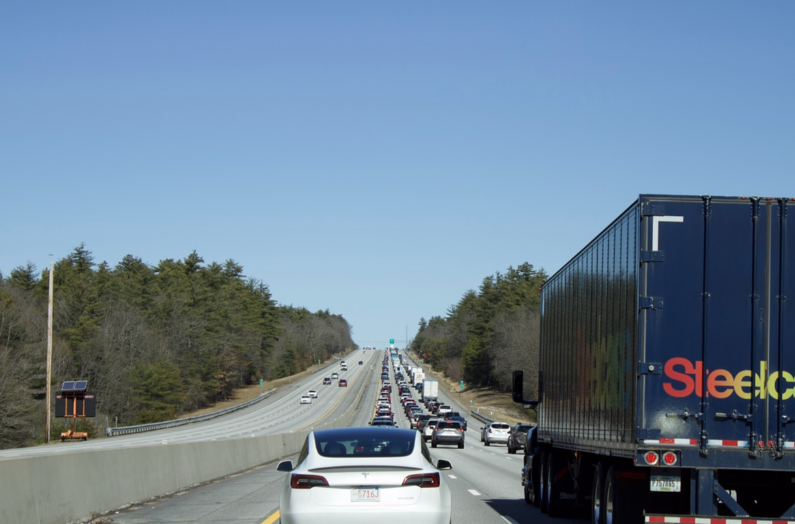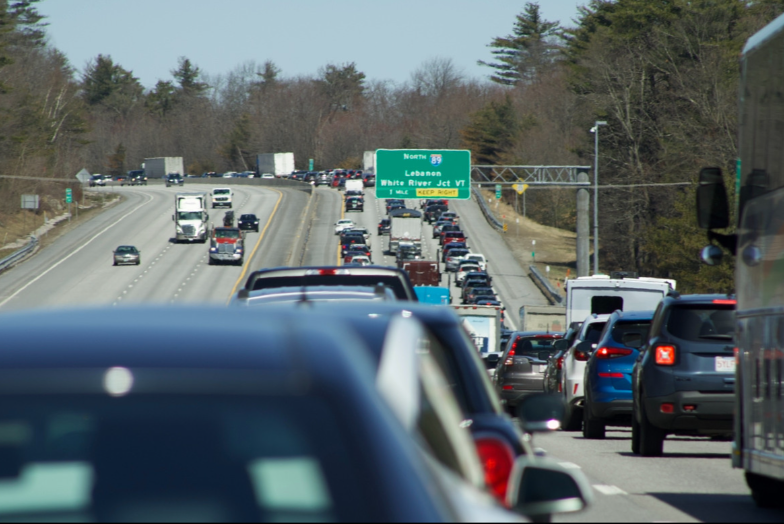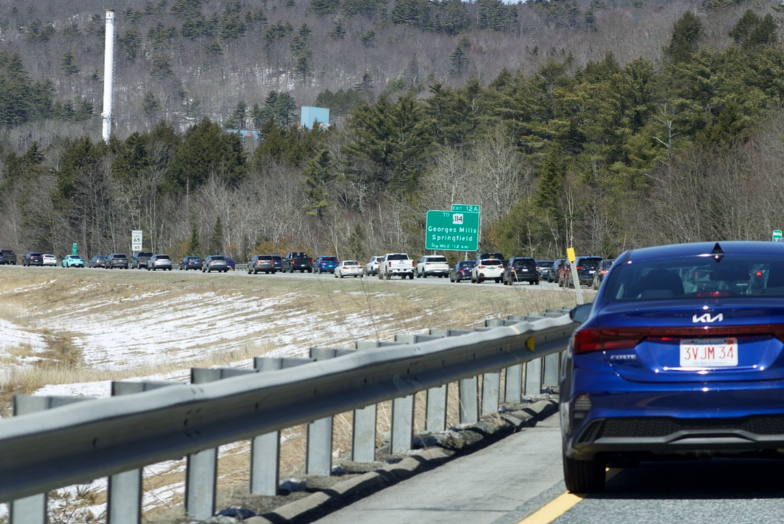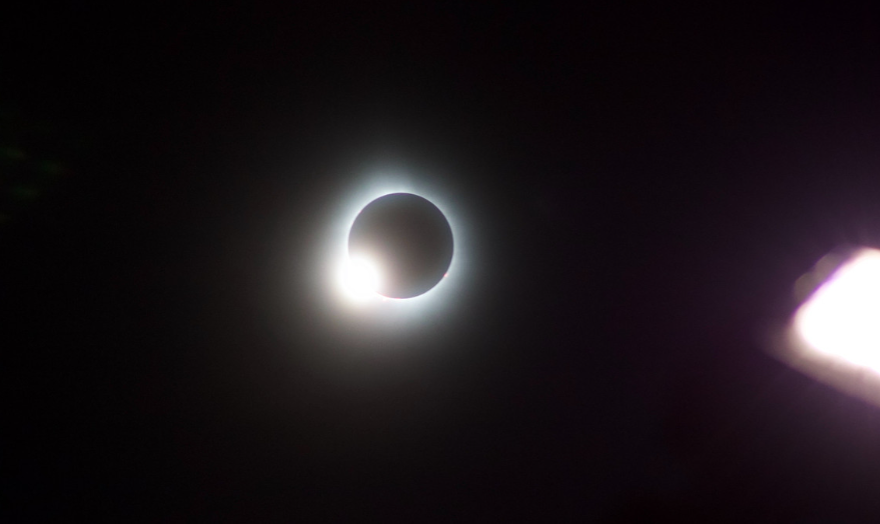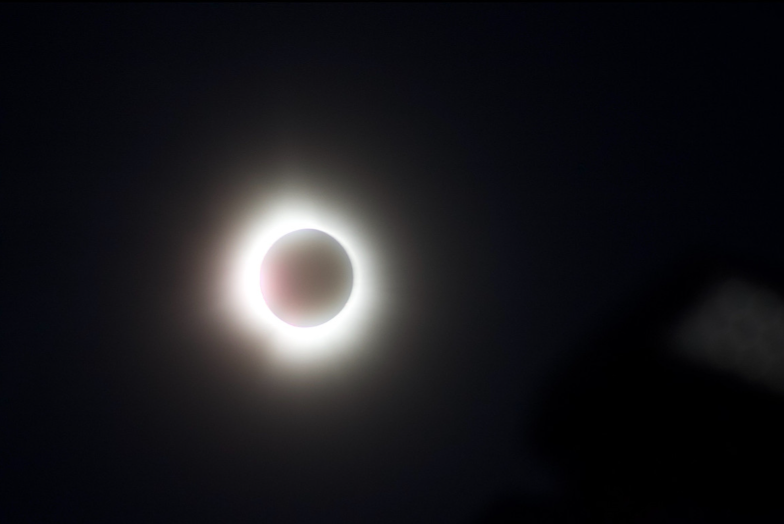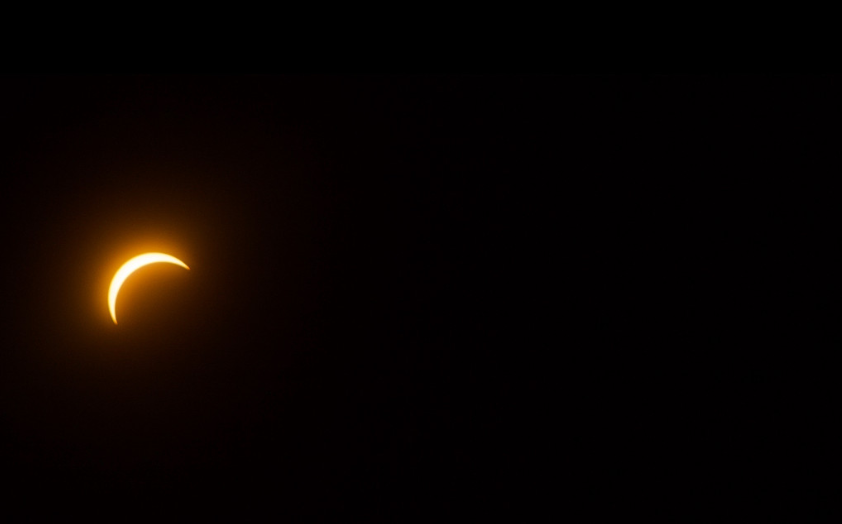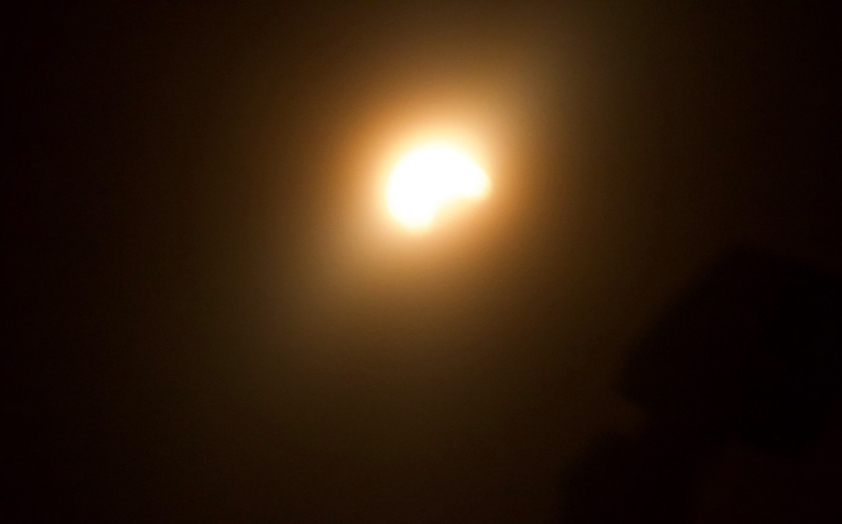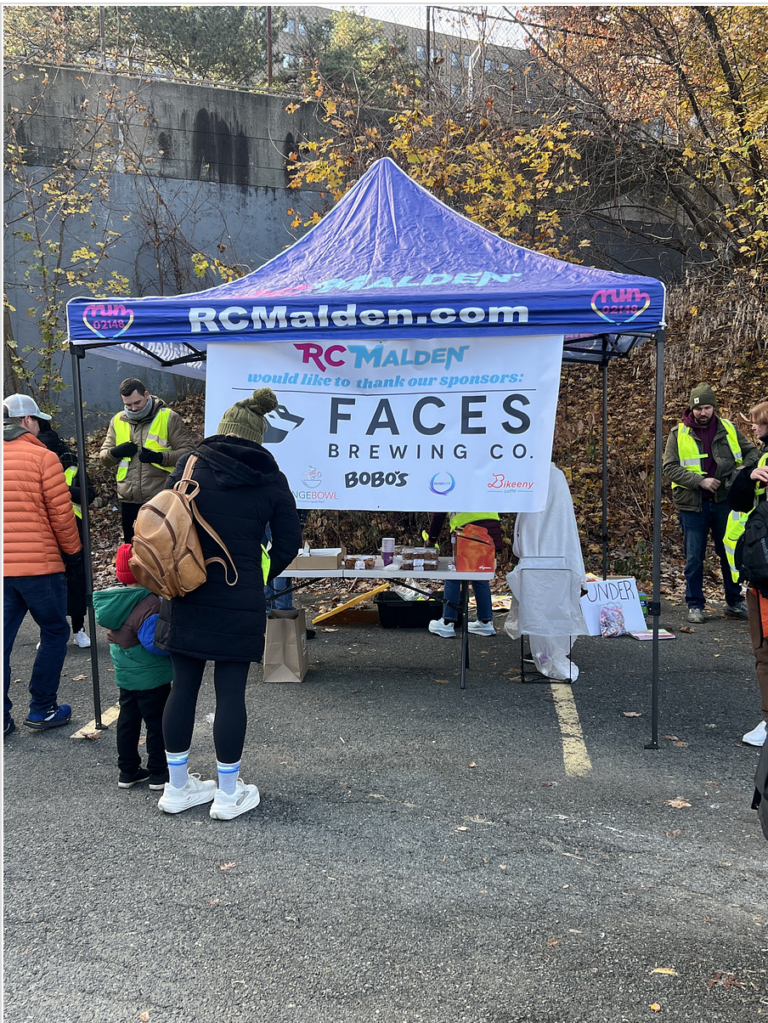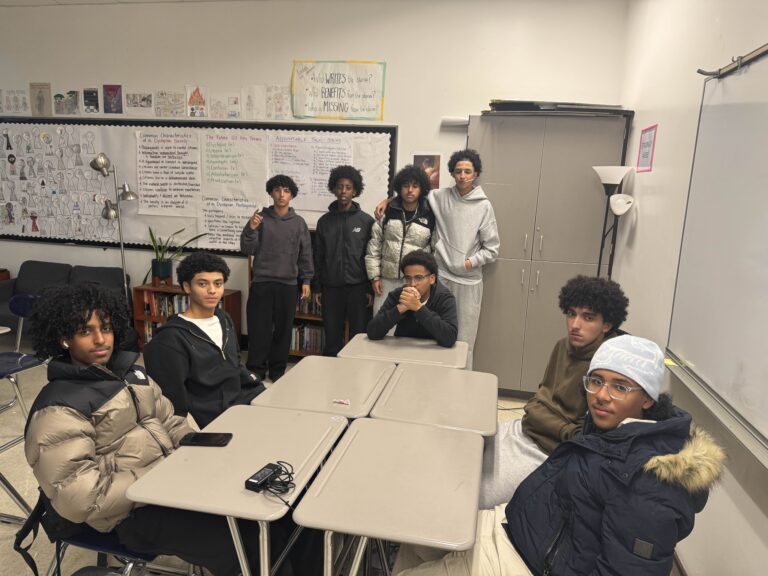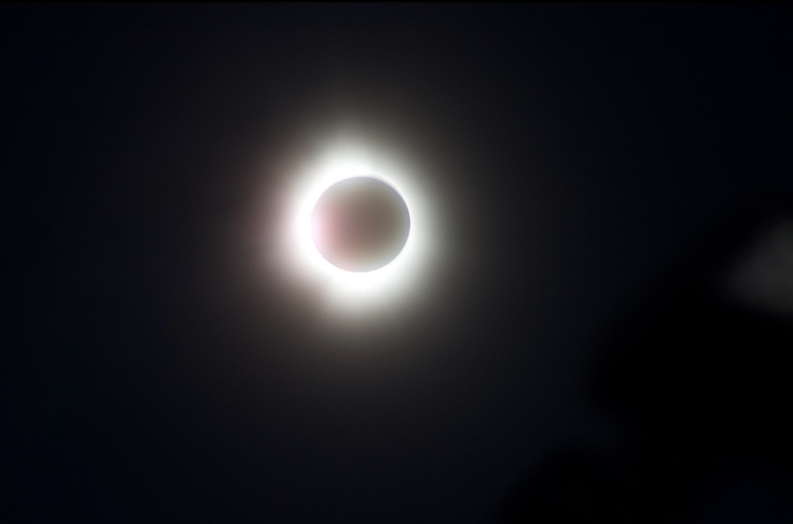
The eclipse finally reaching its extraordinary view. THOMAS TIERNEY
On April 8th thousands of New England communities and thousands more from all over the world came together to view the first total solar eclipse in the US in seven years. With many thousands traveling in order to get into the area, a lot of patience would be needed for the drives to the path of totality. Many families and friends spent hours driving just to see the event and even more hours on the drive back. On the trip home because of everyone rushing to leave and get home before everyone else, Interstate 89 extending from New Hampshire all the way to Canada through Vermont, and southbound Interstate 93 were clogged up until almost 2 am for some.
I drove up to Barre, Vermont to view the eclipse and sat in traffic for about five and a half hours to get there and about the same on the way back. Many people have been asking me, was it worth it? I say yes. The incredible views of the eclipse and just the time staring through my eclipse sunglasses were a once-in-a-lifetime opportunity for most.
A solar eclipse is not a rare occurrence as it happens between two to five times a year, but a solar eclipse will not occur in the same spot for 375 years. The path of totality is the area where the moon is completely blocking the sun during the eclipse. According to NASA the path extends about 108 to 122 miles wide. The path for this eclipse extended from Mexico, continuing in the United States in Texas and traveling through, Oklahoma, Arkansas, Missouri, Illinois, Kentucky, Indiana, Ohio, Pennsylvania, New York, Vermont, New Hampshire, Maine, and small parts of Michigan and Tennessee. The path will continue going north and will reach parts of Canada.
The eclipse was still visible in many parts of the country but the difference between even 99% and 100% totality has been described by many as the difference between night and day. This is because even with the sun being covered almost completely it will still peak out creating enough light for it to still appear as day, but when it reaches 100% it will be as if it is dusk or dawn and you can see what looks like a 360° sunrise around the sky.
Only a few around the country were lucky enough to have a good view of the eclipse, because of the weather. Around the country, many were disappointed by the eclipse because of cloudy weather but those lucky enough to be in the New England region were able to experience the totality of the eclipse. In parts of Vermont, Maine, and New Hampshire viewers were met with clear skies and an amazing sunny day setting up for a perfect view of the first eclipse in years, and the first eclipse in the New England region since 2017. The last full eclipse in the New England region was over 60 years ago, in July of 1963 when Maine witnessed its last total eclipse.
The next total eclipse in the New England area will not be in many of our lifetimes as it is not for another 55 years in May of 2079. Those who were unable to travel or experience the eclipse will have to wait another eight years to view it in Alaska, or will unfortunately have a long wait until August of 2044.

